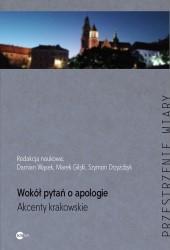Apologia nauki o (nie)pokalanym poczęciu Najświętszej Maryi Panny na Uniwersytecie Krakowskim w XV w.
Streszczenie
Wśród rozmaitych tematów poruszanych na założonym w 1397 r. Wydziale Teologicznym Uniwersytetu Krakowskiego znalazła się również kwestia poczęcia Najświętszej Maryi Panny. Opierając się na anonimowym praskim komentarzu Communis Lectura Pragensis, Benedykt Hesse w latach 1428–1430 wykładał prawdę o oczyszczeniu NMP w łonie matki i Jej uświęceniu w momencie zwiastowania, a nie o Jej niepokalanym poczęciu. Podejście krakowskich teologów do powyższej kwestii ulega radykalnej zmianie od dekretu Antysoboru Bazylejskiego z 1439 r. dogmatyzującego naukę o niepokalanym poczęciu NMP. Po tym wydarzeniu, w latach 1439–1441, Jan Dąbrówka lakonicznie mówił o niepokalanym poczęciu NMP zadeklarowanym przez Magisterium Kościoła, nie roztrząsając argumentów za i przeciw. Z kolei Paweł z Pyskowic w latach 1442–1444 jako pierwszy XV-wieczny krakowski teolog przedstawia pierwszy pełny wykład nauki immakulistycznej. Okazuje się, że na Uniwersytecie Krakowskim w XV w. w przeciągu niespełna 20 lat doszło do radykalnej zmiany stosunku do doktryny poczęcia NMP, co zostało spowodowanego rozstrzygnięciem Soboru Bazylejskiego. Wykład koncepcji makulistycznej zostaje zastąpiony zatwierdzoną przez Kościół apologią doktryny immakulistycznej.



